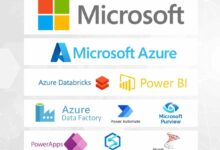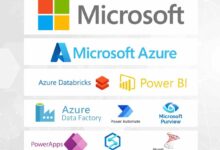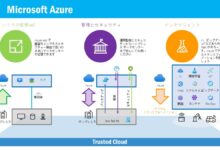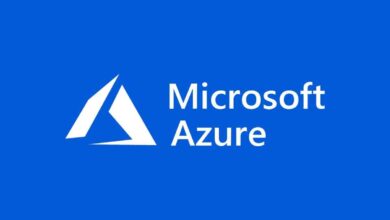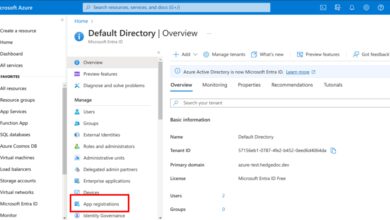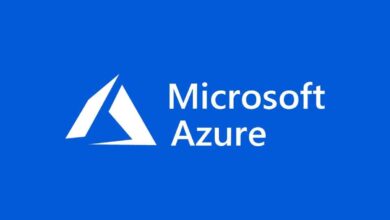Azure Login Portal: 7 Ultimate Tips for Seamless Access
Accessing the Azure login portal doesn’t have to be complicated. Whether you’re a developer, IT admin, or business owner, mastering this gateway is essential for managing cloud resources efficiently and securely.
Understanding the Azure Login Portal: Your Gateway to the Cloud

The Azure login portal is the primary entry point for users to access Microsoft Azure’s vast ecosystem of cloud services. It serves as a centralized dashboard where users can manage virtual machines, storage accounts, networking configurations, and more—all through a secure, web-based interface.
What Is the Azure Login Portal?
The Azure login portal, commonly referred to as the Azure portal, is a web application hosted at portal.azure.com. When you navigate to this URL, you’re directed to the login interface where authentication takes place before granting access to your Azure environment.
- It supports multiple identity providers, including Microsoft accounts and Azure Active Directory (Azure AD).
- Users can access it from any modern browser on desktop or mobile devices.
- The portal provides role-based access control (RBAC), ensuring users only see resources they’re authorized to manage.
How It Differs from Other Microsoft Logins
While Microsoft offers various login portals—such as Office 365, Xbox, or Outlook.com—the Azure login portal is specifically designed for cloud infrastructure management. Unlike consumer-facing logins, Azure requires stricter authentication protocols due to the sensitivity of enterprise data and systems.
“The Azure portal isn’t just a login page—it’s the command center for your entire cloud operation.” — Microsoft Cloud Architect
Step-by-Step Guide to Accessing the Azure Login Portal
Logging into the Azure portal is straightforward, but understanding each step ensures a smooth and secure experience. Let’s walk through the complete process from start to finish.
Navigating to portal.azure.com
The first step is visiting the official Azure portal URL: https://portal.azure.com. Always ensure you’re on the correct site to avoid phishing attacks. Look for the padlock icon in your browser’s address bar and verify the domain is exactly portal.azure.com.
- Avoid clicking links from untrusted emails; type the URL manually or bookmark it.
- Use private/incognito mode if logging in from a shared device.
- Clear cache regularly to prevent outdated session conflicts.
Entering Your Credentials
Once on the login page, enter your email address associated with your Azure subscription. This could be:
- A work or school account (managed by your organization via Azure AD).
- A personal Microsoft account (if used for a free trial or individual subscription).
After entering the email, click ‘Next’ and input your password. If multi-factor authentication (MFA) is enabled, you’ll be prompted to complete the second verification step.
Completing Multi-Factor Authentication (MFA)
MFA adds an extra layer of security by requiring a second form of identification. Common methods include:
- Microsoft Authenticator app notifications or codes.
- Text message (SMS) verification codes.
- Phone calls or hardware tokens.
Follow the prompts carefully. If MFA fails repeatedly, contact your administrator to reset authentication methods.
Common Issues with the Azure Login Portal and How to Fix Them
Even experienced users encounter login problems. These issues can stem from network settings, browser configurations, or account policies. Here’s how to diagnose and resolve the most frequent challenges.
Forgot Password or Locked Account
One of the most common issues is forgetting your password or getting locked out after multiple failed attempts. Azure AD typically locks accounts after five incorrect password entries.
- Click ‘Forgot password?’ on the login screen to initiate a reset.
- Follow the verification steps using your recovery email, phone number, or security questions.
- If self-service password reset (SSPR) is enabled, you can regain access without admin intervention.
Organizations should ensure SSPR is configured properly to reduce helpdesk tickets.
Browser Compatibility and Cache Problems
Not all browsers handle the Azure login portal equally. Microsoft recommends using the latest versions of:
- Microsoft Edge (Chromium-based)
- Google Chrome
- Mozilla Firefox
- Apple Safari (on macOS)
Outdated browsers may fail to load scripts or block essential cookies, leading to login loops or blank screens.
Pro Tip: Always clear your browser cache, disable ad blockers, and try an incognito window before assuming the issue is with Azure.
Multi-Factor Authentication Failures
MFA failures are frustrating but often preventable. Common causes include:
- Out-of-date authenticator app time settings.
- Lost or replaced mobile device without re-registration.
- Network issues preventing push notifications.
Solutions:
- Re-sync the Microsoft Authenticator app.
- Use backup codes stored during MFA setup.
- Contact your IT admin to temporarily disable MFA if locked out.
Security Best Practices for Using the Azure Login Portal
Given that the Azure login portal grants access to critical infrastructure, securing your login process is non-negotiable. Follow these best practices to protect your cloud environment from unauthorized access.
Enable Multi-Factor Authentication (MFA)
MFA is the single most effective way to prevent account compromise. Even if a password is stolen, attackers cannot bypass the second factor.
- Enforce MFA for all users, especially administrators.
- Use the Microsoft Authenticator app instead of SMS when possible (more secure).
- Register multiple verification methods (e.g., phone, email, app) for redundancy.
Learn more about MFA setup in the official Microsoft documentation.
Use Conditional Access Policies
Conditional Access allows organizations to define rules that control when and how users can access the Azure login portal. For example:
- Block access from untrusted countries or IP ranges.
- Require device compliance (e.g., encrypted laptops, updated OS).
- Enforce MFA for high-risk sign-ins detected by Azure AD Identity Protection.
These policies are configured in the Azure AD portal under Security > Conditional Access.
Monitor Sign-In Logs and Anomalies
Azure AD provides detailed sign-in logs that help detect suspicious activity. Regularly review these logs for:
- Failed login attempts.
- Logins from unusual locations or devices.
- Impossible travel (e.g., user logs in from New York and London within minutes).
Set up alerts using Azure Monitor or Microsoft Defender for Cloud to get notified of potential breaches.
Customizing Your Azure Portal Experience After Login
Once you’ve successfully accessed the Azure login portal, you can personalize your dashboard to improve productivity and streamline navigation.
Pinning Resources and Creating Dashboards
The Azure portal allows you to create custom dashboards tailored to your role. For example:
- Developers can pin their app services and databases.
- Network engineers can display virtual networks and firewalls.
- Finance teams can track cost analysis widgets.
To customize:
- Click the ‘+’ icon next to ‘Dashboard’ in the left menu.
- Add tiles by searching for resources or services.
- Resize and rearrange tiles for optimal layout.
- Save the dashboard with a descriptive name.
Using Azure Cloud Shell for Command-Line Access
The Azure Cloud Shell is a browser-based command-line interface accessible directly from the portal. It supports both Bash and PowerShell environments.
- No installation required—runs entirely in your browser.
- Persistent storage via an Azure file share.
- Pre-installed tools like Azure CLI, Terraform, and kubectl.
To launch it, click the Cloud Shell icon (>_ ) in the top navigation bar. You’ll be prompted to create a storage account if it’s your first time.
Setting Up Role-Based Access Control (RBAC)
Rbac ensures users only have the permissions they need. After logging in, administrators can assign roles such as:
- Owner: Full access to all resources.
- Contributor: Can create and manage resources but can’t grant access.
- Reader: View-only access.
Assign roles at the subscription, resource group, or individual resource level for granular control.
Managing Multiple Subscriptions via the Azure Login Portal
Many organizations use multiple Azure subscriptions to separate environments (e.g., dev, test, production) or departments. The Azure login portal makes it easy to switch between them.
Switching Between Subscriptions
After logging in, your default subscription is loaded. To change:
- Click your account name in the top-right corner.
- Select ‘Switch Directory’ or ‘Change Subscription’.
- Choose the desired subscription from the list.
You can also filter resources by subscription in the portal’s search and resource menus.
Consolidating Billing and Governance
Using multiple subscriptions doesn’t mean losing control over costs or compliance. Azure provides tools like:
- Cost Management + Billing: Track spending across subscriptions.
- Azure Policy: Enforce naming conventions, tagging, and security standards.
- Management Groups: Organize subscriptions hierarchically for scalable governance.
These features are accessible once you’ve logged into the Azure portal and navigated to the respective services.
Using Azure Lighthouse for Cross-Tenant Management
Azure Lighthouse enables service providers and enterprises to manage multiple customer or internal subscriptions across different tenants from a single portal view.
- Delegate resource management with granular permissions.
- View consolidated monitoring and alerts.
- Reduce operational overhead by centralizing administration.
Learn more at Microsoft’s Azure Lighthouse documentation.
Advanced Features Accessible Through the Azure Login Portal
Beyond basic resource management, the Azure login portal unlocks powerful advanced capabilities that enhance automation, security, and scalability.
Deploying Templates with Azure Resource Manager (ARM)
ARM templates allow you to define infrastructure as code (IaC). You can deploy entire environments—networks, VMs, databases—with a single JSON template.
- Upload templates directly in the portal under ‘Deploy a custom template’.
- Use the Template Editor for syntax highlighting and validation.
- Integrate with GitHub for version control and CI/CD pipelines.
This reduces manual errors and ensures consistent deployments across environments.
Monitoring with Azure Monitor and Log Analytics
Once logged in, navigate to Azure Monitor to gain insights into your resources’ performance and health.
- Create custom dashboards with metrics and logs.
- Set up alert rules based on CPU usage, disk I/O, or application errors.
- Use Log Analytics to query vast amounts of telemetry data.
These tools are critical for proactive issue resolution and optimizing resource utilization.
Securing Identities with Azure AD Identity Protection
Azure AD Identity Protection detects risky sign-ins and user behaviors. After accessing the portal:
- Go to Azure Active Directory > Security > Identity Protection.
- Review risk detections like anonymous IP addresses or leaked credentials.
- Configure automated responses (e.g., block access, require password change).
This feature leverages machine learning to identify threats in real time.
Alternatives and Integrations to the Standard Azure Login Portal
While portal.azure.com is the default interface, Microsoft offers alternative ways to interact with Azure services—especially for automation and integration scenarios.
Using Azure CLI and PowerShell Instead of the Portal
For scripting and automation, the Azure Command-Line Interface (CLI) and Azure PowerShell modules are powerful alternatives.
- Azure CLI works on Windows, macOS, and Linux.
- Azure PowerShell offers deep integration with Windows environments.
- Both require authentication via
az loginorConnect-AzAccount, which opens a browser window to the Azure login portal for OAuth flow.
These tools are ideal for DevOps workflows and infrastructure-as-code practices.
Single Sign-On (SSO) with Enterprise Applications
Organizations can integrate the Azure login portal with their existing identity systems using SSO.
- Federate with on-premises Active Directory via Azure AD Connect.
- Enable seamless login using SAML or OAuth 2.0.
- Users log in once and gain access to Azure and other cloud apps without re-authenticating.
This improves user experience and strengthens security by reducing password fatigue.
Third-Party Tools and Portals
Several third-party platforms offer enhanced UIs or specialized management features for Azure:
- Azure Portal Designer: Customize the look and feel of the portal for internal teams.
- CloudHealth by VMware: Advanced cost optimization and governance.
- Terraform Cloud: Manage Azure infrastructure via HashiCorp’s platform.
However, all these tools still rely on the core Azure login portal for initial authentication.
How do I reset my Azure portal password?
If you’ve forgotten your password, click ‘Forgot password?’ on the Azure login portal screen. Follow the prompts to verify your identity using your recovery email, phone number, or security questions. If self-service password reset is enabled by your administrator, you can set a new password immediately. Otherwise, contact your IT support team for assistance.
Why can’t I log in to the Azure portal?
Login issues can stem from incorrect credentials, expired passwords, disabled accounts, browser problems, or network restrictions. First, verify your internet connection and try a different browser. Clear your cache or use an incognito window. Ensure MFA is working correctly. If the problem persists, check if your account is locked or contact your Azure administrator.
Is the Azure login portal secure?
Yes, the Azure login portal is highly secure, especially when best practices like multi-factor authentication (MFA), conditional access, and identity protection are enabled. Microsoft invests heavily in security, compliance, and threat detection. However, user behavior—like using weak passwords or falling for phishing—can compromise security. Always follow Microsoft’s recommended security guidelines.
Can I access Azure without the portal?
Yes, you can manage Azure resources without using the web portal. Alternatives include Azure CLI, Azure PowerShell, REST APIs, SDKs, and third-party tools like Terraform or Visual Studio Code extensions. However, initial authentication for most of these tools still redirects you to the Azure login portal for OAuth-based sign-in.
What is the difference between Azure AD and the Azure portal?
Azure Active Directory (Azure AD) is the identity and access management service that handles authentication and user management. The Azure portal is the web interface used to manage cloud resources. You use Azure AD to log in to the Azure portal, but Azure AD also supports other applications and services beyond the portal.
Mastering the Azure login portal is essential for anyone working with Microsoft’s cloud platform. From secure authentication and troubleshooting common issues to leveraging advanced features like ARM templates and Azure Monitor, the portal serves as the central hub for cloud operations. By following security best practices, customizing your dashboard, and understanding integration options, you can maximize productivity and maintain a robust cloud environment. Whether you’re a beginner or an expert, continuous learning and proactive management through the Azure login portal will ensure your cloud journey is both efficient and secure.
Recommended for you 👇
Further Reading:
